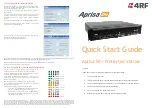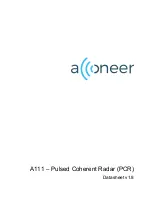
9
TK-980/981
■
Auto TEL
A telephone interconnect call can be made by simply
pressing the key by assigning this feature to the key. This
feature accesses the TEL channel of the available system
automatically.
When the key is pressed, a queue tone is output, and the
“AUTO TEL” appears on the alphanumeric display along
with a flashing handset indicator ( ) to indicate that this
mode has been entered. If the TEL ID is set for the revert
system, the TEL channel of that system is accessed. If all
TEL channels are busy, an attempt is made to access the
TEL channels of another system in which the TEL ID code
has been programmed. It is repeated for 60 seconds until
the access succeeds. If the access succeeds, a dial tone
returns from the repeater. If the key is pressed again when
the queue tone is sounding, this mode is canceled.
If the access fails after 60 seconds, a deny tone is output
and this mode is terminated. When the talk ends, the revert
system/group returns. When the scan mode is effective,
the scan resumes. The Auto TEL feature can be pro-
grammed to turn on or off for each system.
■
ARQ Mode
If affects Trunking mode only. Automatic Repeat
reQuest (ARQ) mode is a manner to minimize the air traffic
of data communication. Also, it enables to occupy the
trunking repeater channel for the data communication pe-
riod.
5. Option Signalling
5-1. DTMF
Built-in DTMF decoder is available for option signalling.
It is possible to use individual call, group call, D.B.D.
(Dead Beat Disable). D.B.D. is used with DTMF only.
If the option signalling matches, a predetermined action
will occur.
If option signalling matches on a group which is set up
with option signalling, the option signalling indicator (
*
) will
flash and option signalling will be released. The transpond
or alert tone will sound.
If the selective call alert LED is set up, the orange LED
will flash.
While option signalling matches (or if option signalling is
deactivated when you are transmitting), you can mute or
unmute ID/QT/DQT/Carrier.
■
AND/OR
You can select AND or OR for option signalling match
conditions.
Alert/Transpond
AND
QT/DQT/ID+DTMF; Option matches = Action
OR
QT/DQT/ID+DTMF; Option matches = Action
AF mute open
AND
QT/DQT/ID+DTMF; Option matches = Action
OR
QT/DQT/ID; Signalling only matches = Action
OPERATING FEATURES
With OR set up, alert/transpond will not function with
only DTMF.
With OR set up, AF mute will not release when only
DTMF matches.
With a conventional group not set up with QT or DQT,
only the carrier is considered when signalling matches.
■
Auto Reset
If option signalling matches a group set up with option
signalling, option signalling is released. After matching op-
tion signalling, option signalling will temporarily reset auto-
matically.
■
Dead Beat Disable
If the D.B.D. code matches, a predetermined action will
occur. Whether option signalling is activated or not, when
D.B.D. matches on any group, the transceiver will become
TX inhibited or TX/RX inhibited. While D.B.D. is active, if the
D.B.D. code + “#” code is received, D.B.D. will disactivate.
When D.B.D. matches, transpond will function. Alert will
not be output, and option signalling match icon will not ap-
pear.
5-2. MSK
Built-in MSK (FleetSync™ : Fleet-ID) decoder is available
for option signalling. When the group ID matches, squelch
remains muted while the station waits for reception of
proper MSK signal. When MSK signal matches, squelch
unmutes.
■
AND/OR
AND : QT/DQT/ID + MSK to unmute. MSK matches =
alert tone
OR : QT/DQT/ID to unmute. MSK matches = alert tone
6. Alphanumeric Two-way Paging Function
(FleetSync™)
■
General
T h e A l p h a n u m e r i c T w o - w a y P a g i n g F u n c t i o n
(FleetSync™) is a Kenwood proprietary protocol. It enables
a variety of paging functions.
■
ID Construction
A radio unit ID is defined by a combination of 3-digit Fleet
and 4-digit ID numbers. Each radio unit must be assigned its
own Fleet and ID numbers.
■
PTT ID
A pre-programmed unique ID (own) can be sent at the
beginning of transmission and/or the end of transmission to
identify which radio unit is on air.
When selecting (sel) for MSK ID, the radio calls he spe-
cific Fleet user the same as selective call.










































